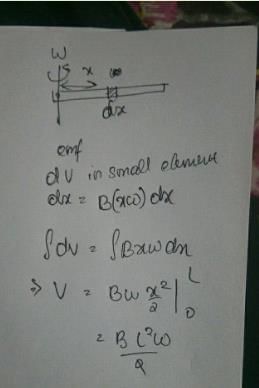VITEEE Physics Test - 3 - JEE MCQ
30 Questions MCQ Test - VITEEE Physics Test - 3
The resistance of a coil for D.C. is in ohms. In A.C., the resistance
An X - ray tube is operated at a constant potential difference and it is required to get X - ray of wavelength not less then 0. 2 nano-metres. Then the potential difference in kilo-volts is [ h = 6.63 x 10-34 J − sec ; e = 1.6 x 10-19 C ; c = 3x 108 m s-1 ]
A photon of energy 2. 5eV and wavelength λ falls on a metal surface and the ejected electrons have a velocity 'V' . If the wave length λ of incident light is decreased by 20%, the velocity of emitted electrons is doubled, then the work function of the metal is
A 2μ F capacitor is charged to 100 volt and then its plates are connected by a conducting wire. The heat produced is
A 4 V battery of internal resistance 1 Ω sends a current through a 3 Ω resistor. The terminal potential difference is
The maximum current that flows through a fuse wire before it blows out varies with its radius r as
Consider telecommunication through optical fibres. Which of the following statements is not correct
When a proton is accelerated with 1 volt potential difference, then its kinetic energy is
The induced e.m.f. produced in the primary and secondary coils is 2 mV and 5 mV respectively. If the rate of change of current is 20 A-s-1, then coefficient of mutual induction of the secondary coil is
A conductor rod of length L rotates with angular speed ω in a uniform magnetic field of induction B which is perpendicular to its motion. The induced e.m.f developed between the two ends of the rod is
Which of the following rays are not electromagnetic wave?
A sphere S1 of radius r1 encloses a total charge Q. If there is another concentric sphere S1 of radius r2 > r1 and there be no additional charges between S1 and S2, the ratio of electric flux through S1 and S2 is
An electron of charge e coulomb passes through a potential difference of V volt. Its energy in joule will be
An electric dipole consists of two opposite charges of magnitude +- q seperated by 2a. When the dipole is placed in uniform electric field E, to have minimum potential energy, then dipole moment p makes which the following angle with E
The capacitance of a parallel plate capacitor is 10 μF when distance between its plates is 8 cm. If distance between the plates is reduced to 4 cm, its capacitance will be
The difference between the mass of a nucleus and the total mass of the constituents is its
A body of mass 1g and carrying a charge 10-8 C passes from two points P and Q. P and Q are at electric potentials 600V and 0V respectively. The velocity of the body at Q is 20 cm s-1 . Its velocity in ms-1 at P is
A heavy nucleus at rest breaks into two fragments which fly off with velocities 8:1. The ratio of radii of the fragments is
When the photons of energy hv fall on a photo-sensitive surface (work function hv₀) electrons are emitted from the metallic surface. This is known as photoelectric effect. The electron coming out of the surface have a kinetic energy. Then it is possible to state that
The magnifying power of a simple microscope M is given by
A prism is made up of material of refractive index √ 3 . The angle of the prism is A. If the angle of minimum deviation is equal to the angle of the prism, then the value of A is
The region near the junction of p - n diode where there are no charge carriers is called















